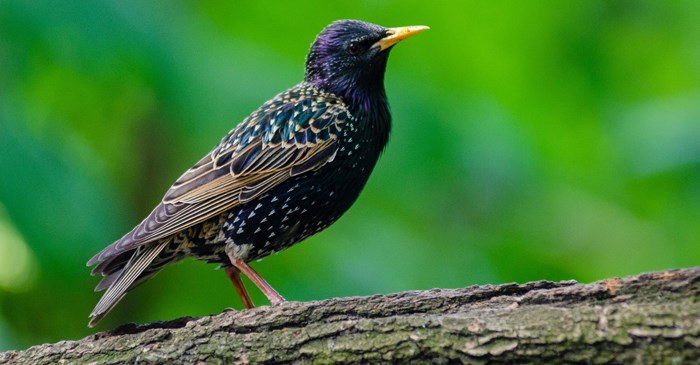We’ll get this out front: Many backyard birders are not fans of the European Starling. They sometimes take over other birds’ nests; damage crops; gather in very large, noisy flocks and deplete bird feeders in record time.
Whatever you think of the European Starling, it does deserve at least some of what the Audubon Society calls “grudging admiration.” Here are a few interesting facts about these tenacious and intelligent birds.
We owe them to Shakespeare
You may have heard that the European Starling is a transplant from across the ocean. As the story goes, a group of Shakespeare enthusiasts thought it would be charming if all the birds mentioned by the Bard in his poems and plays would inhabit Central Park. Of the birds brought to New York City in the 1890s, it was the starlings that adapted and multiplied across North America.
Starlings have a unique adaptation tool
Why did these birds succeed in North America? Here's one possible reason: They have very strong jaw muscles that let them open their beaks when poked into the soil, so they can scout and grab insects, even after the first frost.
Starlings have fine feathers
In the winter, their plumage is brownish with white spots. By summer, they dazzle and shine. When you catch them in sunlight, their feathers show shades of metallic greens, blues and purples. Scientists have discovered Starlings and other birds have an extra receptor that lets them see ultraviolet light. That means through the eyes of a bird, a Starling's feathers are likely brighter and more color-saturated than how we humans see them.
They can be nest bullies, but …
Surprisingly, the Starling population is on the decline in North America, with a 52 percent decrease between 1966 and 2015 as reported by the North American Breeding Bird Survey. Because they are known for disrupting the nests of other species there is concern about their effect on native bird populations. In a 2003 study, only sapsuckers were shown to be in decline due to starlings while over 25 other native species were reported to be unaffected.
Feeding starlings
The European Starling is often found in urban areas and readily visits bird feeders. While some enjoy these visitors, others prefer to see less of them. If you're in the latter camp, try some of these tips.
